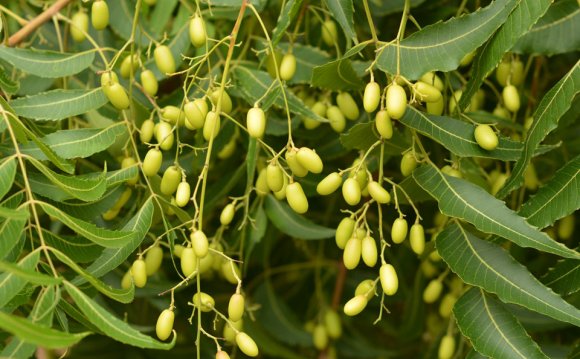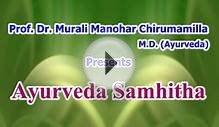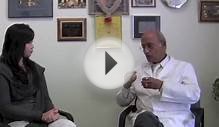
 Rosacea is a chronic skin condition that impacts 16 million people in the United States alone, estimated by the National Rosacea Society. Symptoms range from minor skin irritation, such as facial flushing to debilitating deformities that mostly affect the nose and eyes. There is no known cure for rosacea. However, its triggers are widely understood and symptoms usually are managed with a combination of anti-inflammatory medications and antibiotics.
Rosacea is a chronic skin condition that impacts 16 million people in the United States alone, estimated by the National Rosacea Society. Symptoms range from minor skin irritation, such as facial flushing to debilitating deformities that mostly affect the nose and eyes. There is no known cure for rosacea. However, its triggers are widely understood and symptoms usually are managed with a combination of anti-inflammatory medications and antibiotics.
Ayurveda is an ancient medical system from India that is more than 5, 000 years old. It emphasizes healthy lifestyle practices to fend off disease manifestation through a proper diet, rest and exercise. It also offers an extensive herbal pharmacology system with specific treatments, such as massage and fasting methods, to reduce imbalance and treat disease. Rosacea can be treated by healing digestion and cooling the body with diet, herbs and external applications.
Ayurvedic philosophy explains that there are five primary elements in the universe: air, ether, fire, water and earth. These elements come together to form three primary pairs of energetic forces, called doshas: vata, pitta, kapha. Vata is the force that binds air and ether; pitta is the force that binds water and fire; and kapha is the force that binds earth and water. Each person has all three of the doshas within their constitution governing physiologic processes and profoundly influencing mental tendencies, body shapes and digestive strengths.
The doshas are continuously moving and changing. They exist in a dynamic relationship with nature. We are able to help balance them through daily routines and lifestyles. When the doshas become in excess because of poor lifestyle, wrong diet, trauma or chronic stress, imbalance manifests in the physical and mental body.
Rosacea’s imbalance
Rosacea is predominantly a symptom of excess pitta (fire and water) dosha, and a sign of excess toxins in the body. Pitta is provoked by heating foods: pungent taste, spices, alcohol, stimulants and meat. It is also driven to excess by heating lifestyle activities: excessive work, competition and chronic stress. Sun, steam, sauna and other heat sources are provoking to pitta. Symptoms of excess pitta include skin inflammation, tendonitis, acne, blood shot eyes, anger, criticism and loose bowel movements.
Ayurvedic assessment of rosacea begins with determining the digestive tendency of the individual. Ayurveda teaches that nearly all imbalance originally manifests from faulty digestion. Digestion is the epicenter of the immune system, including the gastrointestinal tract and several accessory organs, specifically the liver. When pitta is in excess, individuals often report frequent bowel movements, loose bowel movements, hyperacidic conditions and acid reflux.
Even if clients report having normal digestion, the health of the skin is an important tool that is used to determine what is happening within the gastrointestinal tract. The skin reveals the health and vitality of the client. Pitta excess tends to infiltrate the liver and small intestine where it then moves into the blood. The more severe the symptoms are, the more pitta is in excess. When excess pitta is combined with toxins in the blood, it will eventually manifest skin imbalances such as the overproduction of oil, acne and rosacea.
Cleansing and balance
Ayurvedic treatment of rosacea begins with cleansing the blood of toxins and using lifestyle activities to reduce excess pitta. Ayurveda uses a category of herbs called alteratives to cleanse the blood. Aloe, burdock root, chamomile, comfrey, dandelion root, fennel, mint and turmeric root are a few of the most easily accessible alteratives. They can be made into a general tea or used as an ingredient in savory dishes. To use them at stronger doses, required to treat imbalance and disease, it is generally recommended to take them in tincture or capsule variations.
Ayurveda also uses diet to reduce doshic excess. Pitta is treated with a cooling diet that emphasizes sweet, bitter and astringent tastes, and minimizes salty, pungent and sour tastes. In general, a pitta-reducing diet is anti-inflammatory. It includes lots of vegetables, healthy vegetable fats, oils and grains with small amounts of animal protein. Raw vegetables and fruits tend to be naturally cooling and most pitta types can digest them easily. Grains, sweet vegetables and some dairy products are considered medicinal for excess pitta. However, most spices—garlic, onion and peppers of all kinds—are pungent and heating, and should be avoided. Salt is also considered heating and pitta types are encouraged not to go over one teaspoon, which is the recommended daily allowance by the FDA. Fermented foods such as yogurt, citrus fruits, wine and vinegar are generally considered sour, and therefore, too heating for excess pitta.
Finding calm
Ayurveda teaches that humans are powerful creators in the manifestation of health, which can be influenced through diet and behavior, but none is more powerful than the mind. And yet, when the body is sick and physical appearance is threatened, remaining calm can be challenging.
RELATED VIDEO












